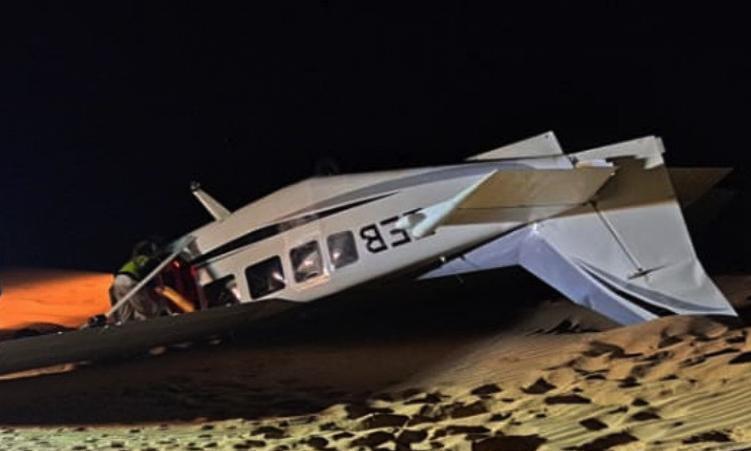Africa-Press – Namibia. A preliminary report reveals that engine failure forced the Namib Desert crash-landing of a charter flight from Sossusvlei to Swakopmund, but the pilot saved all six passengers.
The Directorate of Aircraft Accident and Incident Investigations (Daaii) recently released the report.
The GippsAero GA8 Airvan went down on 16 October about 11 nautical miles south-east of the Charlottenfelder Southern Diamond Camp, the report states.
The aircraft was operated by Namibia Aviation Services and was carrying a pilot and six passengers. No injuries were recorded, though the aircraft was severely damaged.
According to the report, the pilot had completed two earlier scenic sectors without incident and was on the final leg back to Swakopmund when the engine became uncontrollable.
Investigators say the pilot first heard a faint knocking sound during start-up, but noted that it faded completely upon idling, and run-up checks revealed no abnormalities.
The situation changed abruptly about 12 nautical miles from Charlottenfelder.
The report states that the pilot experienced “a sudden, aggressive, loud, and distinct vibration from the engine”.
Attempts to control the aircraft’s power settings were unsuccessful.
“Manual inputs to both the mixture control lever and the manifold pressure (throttle) control had zero effect on the engine’s behaviour,” the report says.
Passengers and crew also observed oil being pushed out of the cowling and a visible deformation on top of the engine cover, indicating major mechanical failure.
With the engine performance described as “uncommanded and uncontrollable”, the pilot sent a mayday signal.
Another company aircraft, flying ahead, relayed the distress call to Walvis Bay’s air traffic control.
The report says the aircraft touched down at a shallow angle, but the nose wheel broke off on impact with soft sand, causing the aircraft to flip and come to a halt upside down.
The right main wheel also detached during the roll sequence.
Despite the force of the crash, the pilot managed to assist all passengers in evacuating through the co-pilot door. Investigators credit the pilot’s actions.
“He successfully executed a forced landing and ensured the safe evacuation of all six passengers without serious injury,” the report says.
It confirms that the pilot was properly licensed, medically fit and current, with 4 781.7 total flying hours, including 454.4 hours on the GA8 type.
The aircraft had also recently undergone a 100-hour mandatory periodic inspection and a 25-hour oil change, and had flown three flights after maintenance.
The Daaii emphasises that the findings are preliminary and subject to change as the investigation continues.
“The primary event was a catastrophic engine failure,” the report says, adding that the remote and extremely rugged and inhospitable terrain significantly increased the risk of the landing.
Meanwhile, the Namibia Civil Aviation Authority (NCAA) has clarified its role following the release of the report.
NCAA spokesperson Nelson Ashipala says the authority is not responsible for accident investigations.
“The Ministry of Works and Transport under the Directorate of Aircraft Accident and Incident Investigations does all accidents investigation, the NCAA does not investigate accidents,” he says.
A final report will be released once the full technical examination of the wreckage is complete.
The Namibian uses AI tools to assist with improved quality, accuracy and efficiency,
For More News And Analysis About Namibia Follow Africa-Press






